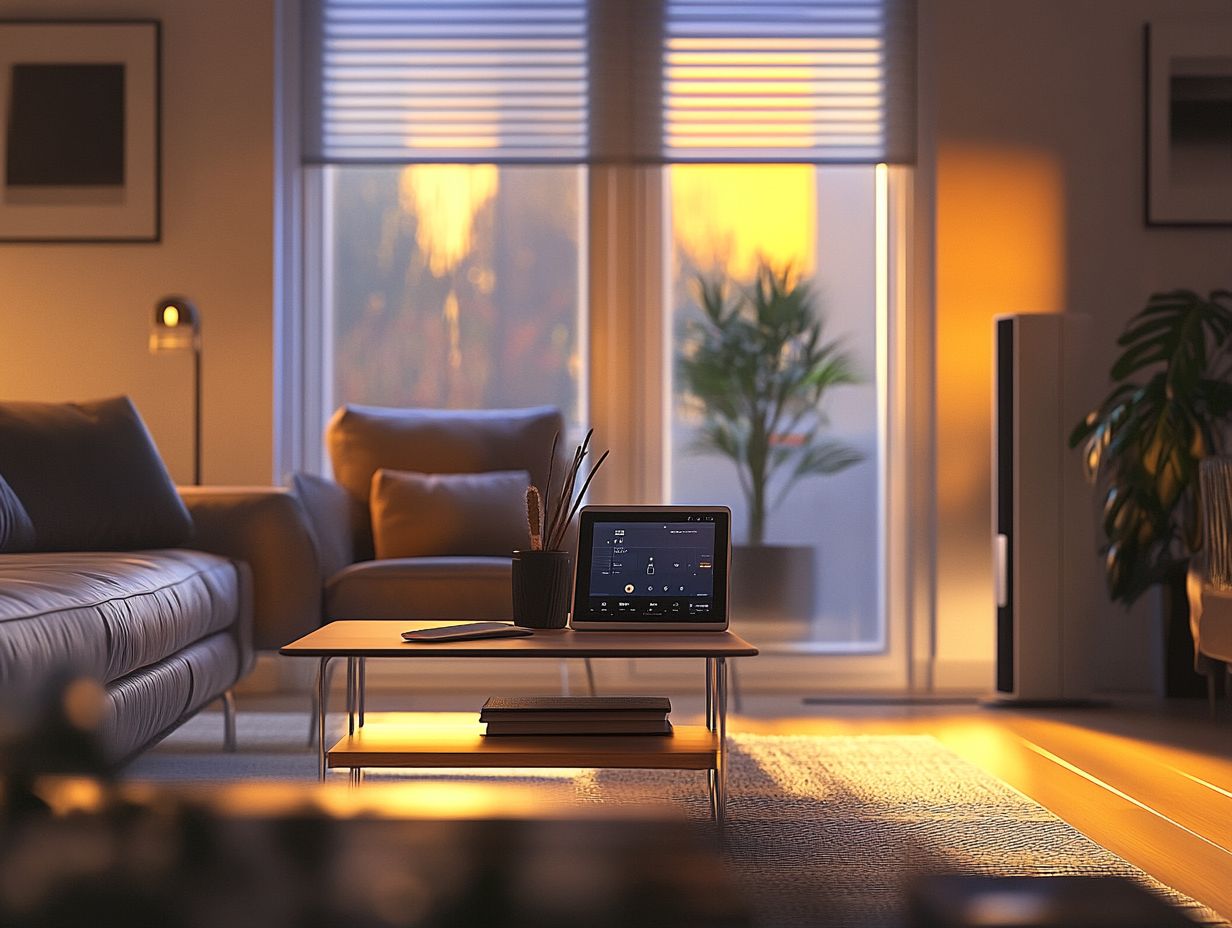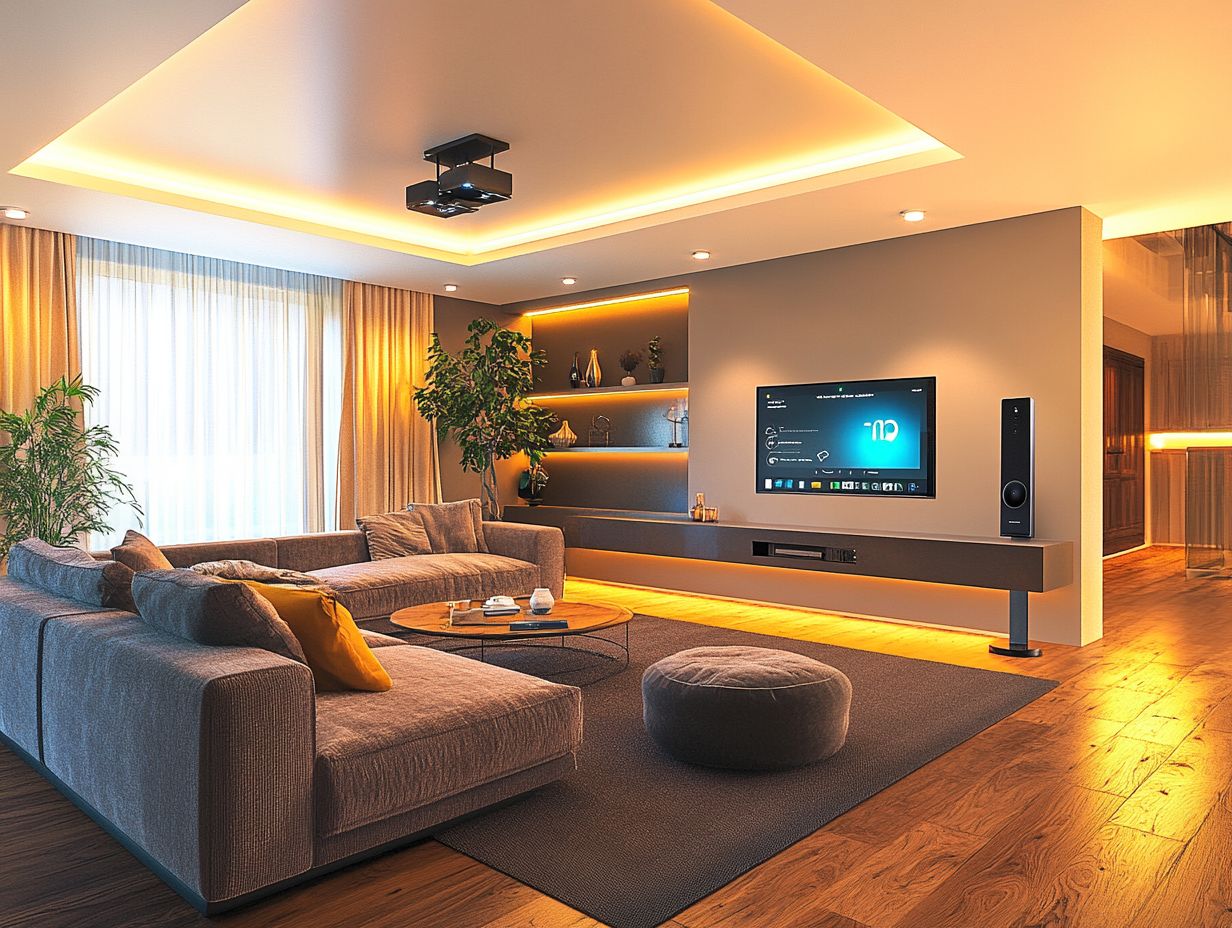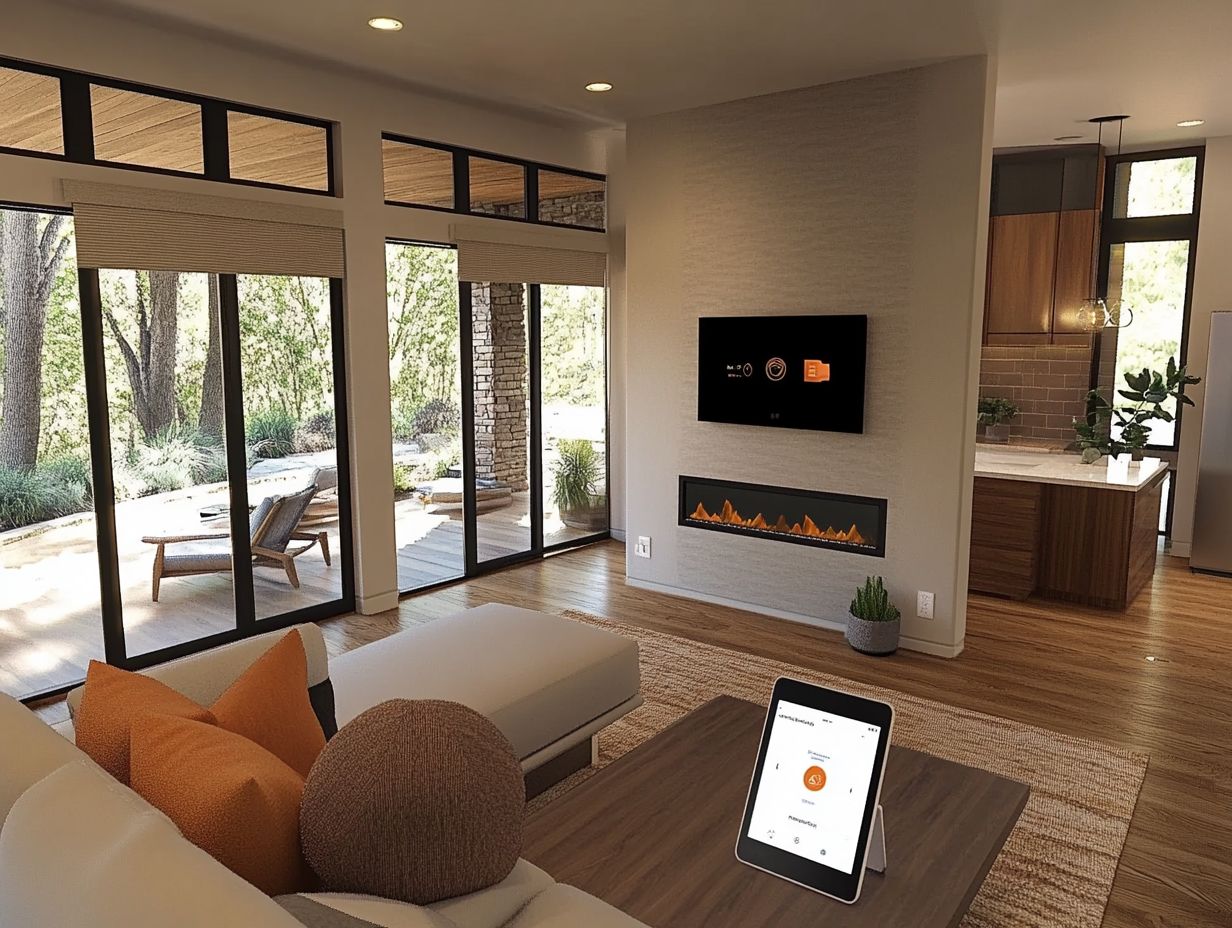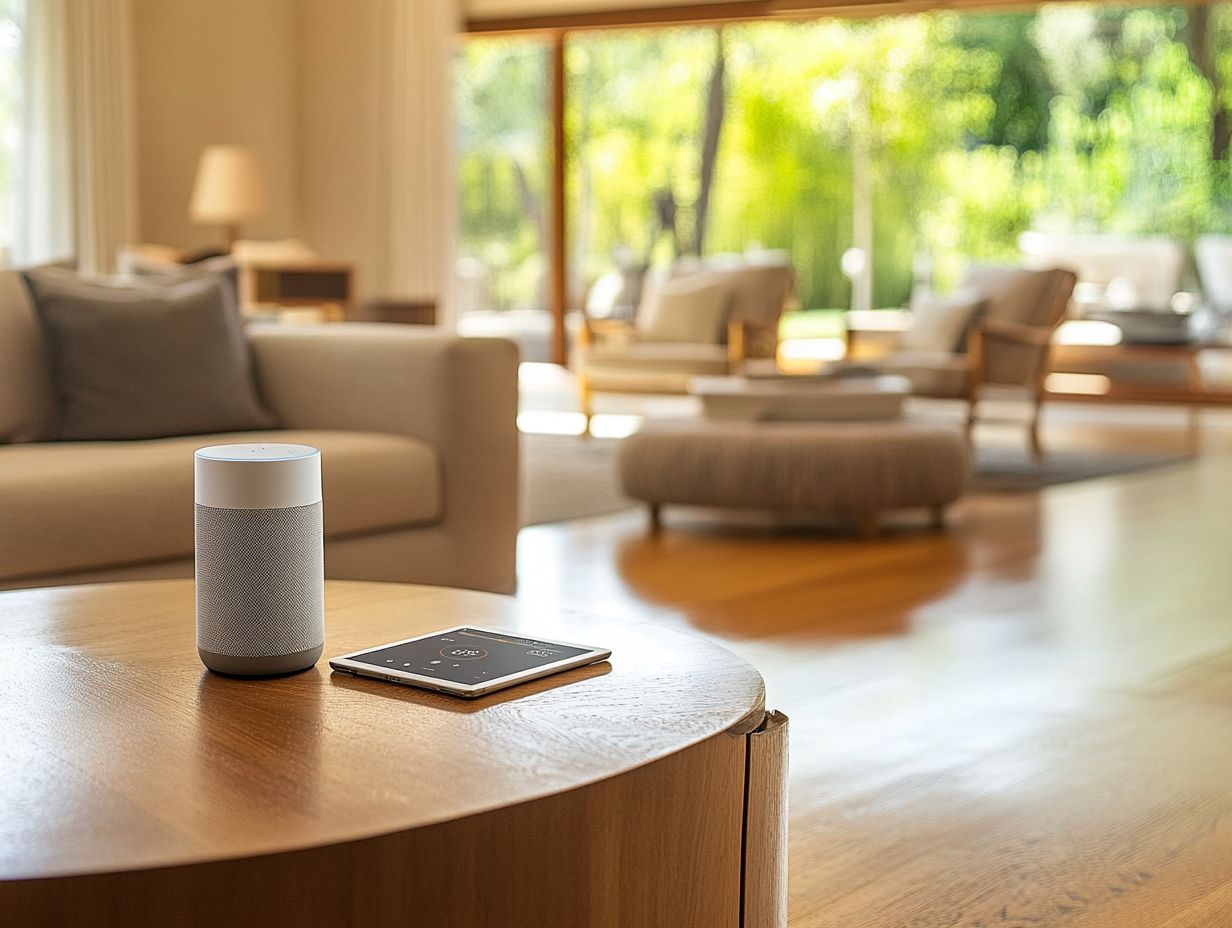Smart Home Essentials: Apps to Automate Your Living Space
6th February 2025
Diane Marley
In today’s tech-savvy and rapidly evolving society, the concept of a **smart home** is gaining significant traction. By utilizing technology to automate various tasks and enhance convenience, **smart homes** provide a seamless living experience that can be tailored to individual needs through intelligent lighting and smart appliances. This article examines the **benefits of automating your living space**, including improved energy efficiency and the ability to control devices remotely through smart home apps and mobile control. We will explore the **key features** of popular smart home applications, such as app integration and smart home hubs, assist you in selecting the most suitable option, and offer a **step-by-step setup guide** for transforming your residence into a **smart haven** with enhanced home connectivity. Discover how technology, including smart sensors and automation routines, can enhance your **daily life**.
What is a Smart Home?
A smart home is defined as a residence outfitted with an array of interconnected Internet of Things (IoT) devices that significantly enhance the living experience through automation, machine learning, and advanced technology. This encompasses smart lighting, smart thermostats, and home security systems, which not only provide convenience, comfort, and safety alerts but also facilitate improved energy management and security features.
By integrating these technologies, homeowners can effectively control their environment, benefiting from a user-friendly interface, voice control capabilities with voice assistants like Amazon Alexa and Google Home, and mobile applications that enhance daily life.
The true advantage of a smart home lies in its capacity to adapt to the specific preferences and routines of its occupants. For instance, advanced home automation systems allow users to program their smart coffee makers to begin brewing automatically each morning or adjust the thermostat to their desired indoor climate upon their arrival, utilizing scheduling and automation triggers. This level of customization offers exceptional convenience, resulting in a streamlined living experience.
Moreover, smart devices play a crucial role in promoting energy efficiency by providing real-time data, predictive analytics, and automated notifications, assisting users in minimizing waste and reducing utility expenses.
With integrated security features such as smart locks, smart cameras, and smart security systems, homeowners can enjoy increased peace of mind, knowing they can monitor their property remotely, thereby enhancing overall safety.
Benefits of Automating Your Living Space
The implementation of smart home technology for automating one’s living space can significantly enhance daily routines by offering exceptional convenience, energy efficiency, and lifestyle enhancement.
Home automation enables individuals to manage various elements, including smart appliances, lighting systems, and security measures, through mobile applications and remote management. With capabilities such as remote monitoring, scheduling, and automated routines, homeowners can experience a more streamlined lifestyle while actively participating in energy conservation efforts, supported by smart grids and smart home ecosystem.
This integration ultimately fosters a more comfortable and productive living environment, enhanced by intelligent lighting and smart outlets.
Convenience and Efficiency
One of the primary advantages of a smart home is the convenience it offers through the integration of various automation tools that streamline everyday tasks.
By controlling smart locks, smart plugs, and managing home networks with smart speakers, these Internet of Things (IoT) devices collaborate to create a seamless user experience through system interoperability.
Utilizing mobile platforms and voice assistants such as Amazon Alexa or Google Home allows homeowners to access their smart home ecosystem remotely, ensuring that their living space is not only efficient but also customized to their lifestyle preferences, with features like user customization and app updates.
For example, smart thermostats enable users to optimize energy consumption by automatically adjusting the temperature based on occupancy and time of day. This functionality enhances comfort while also resulting in significant savings on utility bills.
Additionally, smart blinds can respond to varying sunlight levels, automatically opening or closing to maintain an ideal indoor environment without the need for manual adjustments, facilitated by automation systems and geofencing.
With these interconnected devices, the smart home functions as a cohesive system that fosters efficiency, making daily routines more manageable and providing greater control over the living environment, supported by home automation platforms and data privacy measures.
Key Features of Smart Home Apps
Smart home applications serve as essential tools that enable users to control and monitor their home automation systems from any location, facilitating both remote control and seamless integration with various smart devices through integration capabilities and wireless technology.
These applications are designed with user-friendly interfaces, enabling homeowners to efficiently manage smart lighting, HVAC systems, and home security cameras.
Furthermore, they offer the capability to customize routines, receive real-time notifications and mobile notifications, and work together with other platforms through Bluetooth, Wi-Fi, and Zigbee.
Consequently, smart home applications ensure that the management of home environments is both convenient and efficient, providing a sophisticated approach to task automation and home entertainment.
Remote Control and Monitoring
One of the notable features of smart home technology is the capability to remotely control and monitor home devices in real-time through specialized mobile applications. Homeowners can adjust settings on their smart thermostats, check security cameras, and manage energy consumption from their smartphones, regardless of their location. This functionality not only enhances convenience but also strengthens home security by enabling users to receive notifications and safety alerts about their home environment, thereby ensuring peace of mind, supported by smart fire alarms and smart smoke detectors.
Various types of devices, such as smart locks, smart smoke detectors, and lighting systems, facilitate the creation of a seamless and interconnected network for homeowners, enhancing safety and comfort.
- Smart locks offer keyless entry options and provide real-time access reports, thereby enhancing security by allowing individuals to grant or revoke access remotely, utilizing home network and user feedback.
- Smoke detectors enhance safety by sending immediate alerts to users' devices in the event of an issue.
These innovations collectively improve the user experience, enableing individuals to maintain a secure and efficient home while promoting an intuitive approach to managing household tasks.
Integration with Other Devices

The integration of smart home devices is essential for establishing a cohesive home automation experience, enabling various appliances and systems to function together seamlessly, leveraging smart home hubs and multimedia control. Homeowners are able to connect smart lighting, smart locks, and other smart appliances through a single hub, enhancing compatibility and control within the home network.
This interconnectedness not only simplifies the user experience but also improves the overall functionality of the smart home ecosystem, allowing users to create customized routines and user profiles that align with their specific lifestyle needs.
Recognizing the significance of device integration can help address compatibility challenges that frequently arise among different brands and technologies, ensuring device compatibility and seamless app integration. As smart home technology continues to evolve, the variety of sensors and devices can lead to frustration if they do not communicate effectively.
Recent advancements in universal protocols and platforms are starting to bridge these gaps, facilitating harmonious interaction among disparate devices, ensuring seamless integration capabilities and system interoperability.
By selecting products that comply with common standards, homeowners can ensure a more seamless experience, resulting in a truly interconnected smart home that adapts to their daily routines and supports energy-saving features and firmware updates.
Popular Smart Home Apps
A wide array of smart home applications is currently available, each presenting distinct features and capabilities tailored to various aspects of home automation.
Ranging from comprehensive smart home management systems to specialized applications that focus on specific functionalities such as energy management, home security, and health monitoring, these tools offer solutions to meet diverse homeowner requirements.
It is essential to understand the strengths and compatibility of these applications in order to create a well-rounded smart home setup that optimizes both efficiency and convenience, utilizing technologies like augmented reality and QR codes.
Overview and Features
Smart home applications are typically equipped with features specifically designed to enhance the user experience, including user-friendly interfaces, application integration, and smart mirrors that streamline control over various devices.
By enabling users to seamlessly orchestrate their home environment, these applications facilitate intuitive management of essential elements such as lighting and temperature settings.
Homeowners can effectively manage their energy consumption through features like scheduling and real-time monitoring, which ensure the efficient operation of smart appliances and lighting systems.
Furthermore, many of these applications offer compatibility with popular voice assistants, thereby enhancing their functionality and ease of use through intuitive voice commands and remote access.
Advanced analytics frequently provide insights into energy consumption patterns, enableing users to make informed decisions that contribute to cost savings and a reduced carbon footprint, thereby exemplifying a sophisticated approach to energy management and energy consumption monitoring.
How to Choose the Right Smart Home App
Selecting the appropriate smart home application is crucial for effective home automation, as various applications provide different features and levels of compatibility with smart devices.
Homeowners should carefully evaluate factors such as individual preferences, device compatibility, and the specific functionalities required, such as energy management, home security, or smart garden integration.
An app that aligns well with these needs can greatly enhance the user experience, facilitating smoother control over the smart home ecosystem and ensuring seamless integration of technology into daily life, supported by remote monitoring and task scheduling.
Factors to Consider
When selecting a smart home application, several key factors warrant careful consideration, including user interface design, ease of integration with existing smart devices, and the level of data privacy provided. A user-friendly interface can significantly enhance the overall experience, facilitating easier management of the smart home setup for homeowners. The integration capabilities of the application with IoT devices and smart appliances is crucial for a seamless experience.
It is imperative to ensure that the application complies with stringent data privacy standards to safeguard personal information within the smart home ecosystem. Moreover, smart security systems including smart locks and smart cameras play a vital role in enhancing home security.
Plus these foundational aspects, the application's ability to seamlessly work together with a wide range of devices is essential, as compatibility can greatly enhance flexibility and functionality. Homeowners should seek applications that not only support popular brands but also provide regular updates to ensure compatibility with newer products. Integration with voice assistants like Google Home and Amazon Alexa can further enhance user experience through voice control and remote access.
Furthermore, security features such as end-to-end encryption and two-factor authentication can strengthen users' confidence in their chosen application. Features like mobile notifications and safety alerts ensure real-time updates for home monitoring and security.
Collectively, these elements create a cohesive, intuitive experience that prioritizes both usability and the protection of sensitive data—considerations that are increasingly relevant in today’s smart home environment. Smart hubs and app integration allow for centralized control, enhancing system interoperability and user customization.
Setting Up Your Smart Home

Establishing a smart home represents a significant undertaking that necessitates meticulous planning and consideration of the devices and systems intended for integration into the home network. The use of smart home hubs and automation systems is fundamental for creating a connected environment.
From the selection of compatible smart home devices to a comprehensive understanding of the installation process, a well-executed setup is essential for ensuring that the home automation system operates efficiently. Employing wireless technology such as Wi-Fi and Bluetooth ensures home connectivity and device compatibility.
For individuals seeking a more tailored approach, do-it-yourself automation options are available, enabling homeowners to customize their smart home configurations in alignment with their specific needs and preferences. This includes the integration of smart lighting and smart thermostats for energy management and indoor climate control.
Step-by-Step Guide to Smart Home Setup
A comprehensive, step-by-step guide to establishing a smart home can streamline the process, ensuring that all aspects of installation and integration are effectively addressed. Begin by evaluating your home automation requirements and selecting the appropriate smart home technology that aligns with your lifestyle. Consideration of energy-saving features and energy efficiency can contribute to energy consumption management.
Subsequently, install automation tools such as smart plugs, smart lighting, and smart speakers strategically, taking into account your preferences and the existing infrastructure, while prioritizing user-friendly interfaces and connectivity for seamless operation. Automation triggers and scheduling can aid in task automation and enhance convenience.
Once the initial devices are installed, it is essential to establish a robust network, preferably utilizing a mesh Wi-Fi system to ensure consistent coverage throughout your residence. Following this, integrate your devices into a centralized application or smart home hub, which facilitates easier control and management of automation settings. Remote monitoring and remote management capabilities ensure you can access and control your home systems anytime, anywhere.
Additionally, consider configuring routines that automate daily tasks, thereby enhancing convenience and efficiency. Periodically monitor the performance of your smart home, addressing any issues that arise to maintain optimal functionality, ensuring that the system operates smoothly and adapts to your evolving needs. Leveraging machine learning and predictive analytics can further optimize task scheduling and enhance home wellness.
















